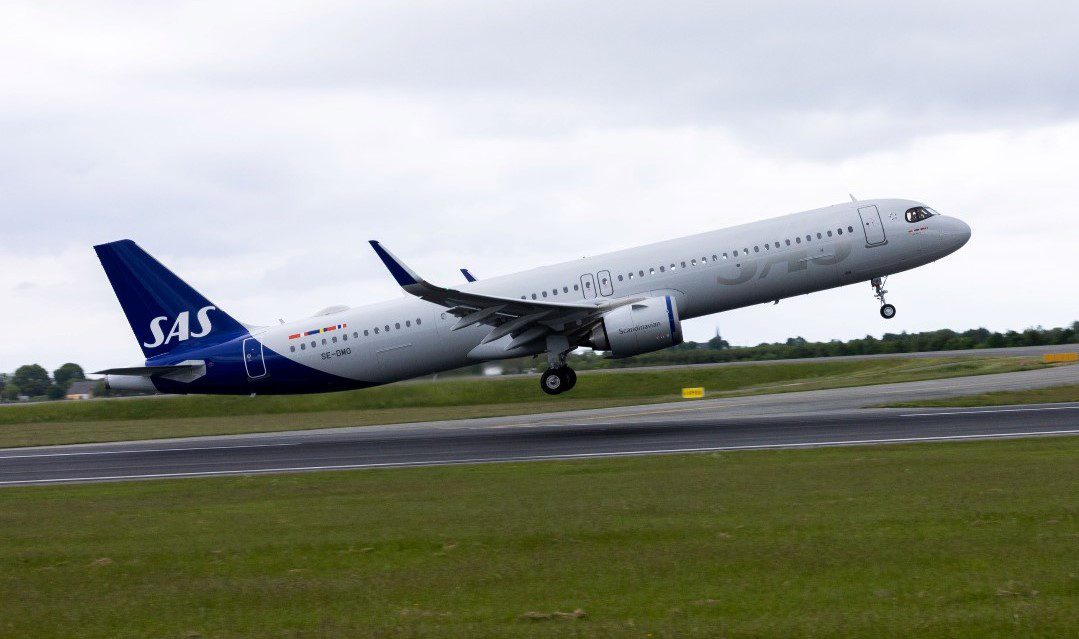
285487825 10166457873000788 1047756498899586773 n
Scandinavian carrier SAS warns that it will have to radically downsize its operations and fleet, and even sell strategic assets if the pilot strike continues much longer. The strike, which started on July 4, has already cost the airline some SEK 1.0 to 1.3 billion and is eroding its liquidity position, SAS said in a media statement on July 14. SAS warns of radical downsizing if strike continues.
Pilot unions in Sweden, Norway, and Denmark called for a strike on July 4 after weeks of mediation with the airline over the targeted twenty percent cost reduction in the SAS FORWARD plan ended without agreement. A day later, the airline announced that it would file for Chapter 11 bankruptcy protection with the Southern District New York court.
Last week, the court approved all First Day motions that will allow the carrier to continue operations as it prepares to implement the restructuring plan, conditional on the support of its stakeholders. Chapter 11 covers parent company SAS AB, SAS Sverige, SAS Danmark, SAS Norge, Scandinavian Airline System Denmark-Norway-Sweden, Scandinavian Airlines of North America, and eight more subsidiaries. Court filings show that SAS has outstanding funded debt obligations of $1.35 billion in state bonds, commercial hybrid bonds, and commercial loans in all three Nordic countries.
SAS failed to implement half of targeted cost reductions
Court documents show that SAS has failed to secure the previously planned SEK 4.0 billion in annual savings. “Unfortunately, the targeted cost reductions were not achieved because of, among other things, a lack of concessions from labor and aircraft lessors. As of the end of the fiscal year 2021, SAS had only achieved roughly 50 percent of the cost improvements contemplated in connection with the 2020 Recapitalization. (…) In addition to slower than expected recovery in passenger demand, SAS has not been able to achieve sufficient concessions from aircraft lessors, OEMs, and labor unions on renegotiated agreements. The ongoing war in Ukraine has also had a negative impact on SAS’s business, including increased operating costs. Due to the closure of Russian airspace in March 2022, SAS was forced to pause all flights between Denmark and Japan and adjust routes for flights between Scandinavia and China, resulting in flight time extensions of approximately two hours. The conflict has also caused jet fuel prices to spike.”
Hence the SAS FORWARD restructuring plan, which was announced in February and seeks another SEK 3.5 billion in cost savings to get to SEK 7.5 billion in annual savings in 2024, the conversion of SEK 20 billion in debt into equity, and a capital raise of SEK 9.5 billion. Only Denmark is prepared to swap debt for equity and invest extra in SAS, but Norway and Sweden will only swap debt.
Negotiations have resumed
Negotiations between the airline and unions resumed on Wednesday and continue today. Swedish newspaper Expressen quoted one of the Norwegian negotiators who expected SAS to come up with a new bid. The unions accuse SAS of never having been serious about negotiations and steered towards Chapter 11 from the start.
So far, SAS says that the strike has resulted in 2.550 canceled flights and affected 270.000 passengers on its mainline operations. Unaffected are flights by SAS Connect, SAS Link, and those of partner airlines that assist with wet leases.
The financial impact of the strike is SEK 100 to 130 million per day or SEK 1.0 to 1.3 billion so far. This is eating into the airline’s SEK 7.8 billion net cash that was available by the end of June. Already before the strike, losses between February and April accumulated to SEK 19.7 billion. “The Company’s limited cash reserves, which naturally decline given that summer sales have already largely occurred, will erode very quickly in the face of a continuing pilot strike.”
If the strike continues much longer, SAS says that it will also have more difficulty securing some $700 million in debtor-in-possession (DIP) funding that is to get it through the Chapter 11 restructuring phase. The airline says it is in well-advanced discussions with a number of potential lenders about the DIP funding, but that this is conditional on any prospect that the SAS FORWARD plan and the associated SEK 7.5 billion in structural annual savings by 2024 can be executed and realized.
That’s where SAS management issues a warning in case DIP funding is not secured. “In such an event, the Company will need to consider selling valuable strategic assets under duress while also radically downsizing SAS’s operations and fleet absent a breakthrough in negotiations with its pilot groups. Once those actions are taken, it will be difficult for SAS to rebuild back the size and breadth of its current network and services.”
CEO Anko van der Werff says in a media statement: “We must reach an agreement and end the strike as soon as possible. That will require us to find a solution that is acceptable to all stakeholders that have expressed their intention to support SAS, conditioned on the Company succeeding with SAS FORWARD. The strike is putting the success of the chapter 11 process and, ultimately, the survival of the Company at stake.”
Views: 0



